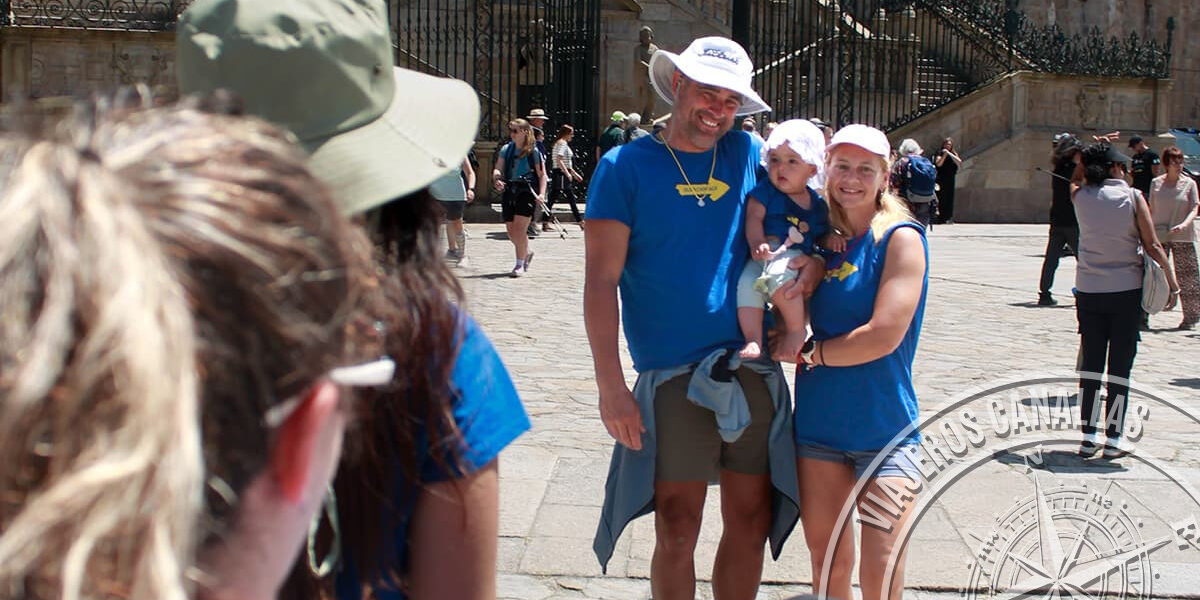A physical end, but not an emotional one
Many pilgrims set out on the Camino de Santiago with a clear goal: to reach the Cathedral of Santiago de Compostela. That moment, after more than 100 kilometres walked, is usually experienced with a mixture of joy and sadness. But when you are in front of the Plaza del Obradoiro, a deeper question arises: Does the Camino really end here?
From the official point of view, the Camino ends in Santiago de Compostela, specifically in the Praza do Obradoiro, where the tomb of the apostle Santiago is located. Here the Compostela is awarded, the pilgrim's mass is celebrated and although for many the objective is achieved, for others it is only the beginning.
The Camino as a start
Many pilgrims agree on something surprising: the real Camino begins upon arrival. On returning home, the teachings, encounters, silences and reflections are gradually integrated into everyday life. The Camino leaves its mark and changes the way you see the world.
Finisterre: the end of the world... or a new beginning?
But if, apart from being emotional, you want to extend the route physically, you can also continue following the old path that leads to Cape Fisterra (Finisterre), a symbolic place known as "the end of the world".
There, on the edge of the Atlantic, some people burn their clothes, others leave a stone and their shoes or simply contemplate the sea as a metaphor for everything they have experienced. Muxía, a little further north, also offers a spiritual end, full of beauty and less touristy.
So where does it really end?
The answer is personal. For some, it ends in Santiago. For others, it ends in the ocean. And for many, it never ends. Because the Camino, beyond a route, is an experience that lives inside and that, once started, rarely stops.
What to do after arriving in Santiago?
But for those who want to continue their visit when they arrive in the capital, here are some recommendations: Attend the pilgrim's mass in the Cathedral, visit the tomb of the Apostle Santiago, stamp the last credential at the Pilgrim's Office, discover the city: the Mercado de Abastos, the Alameda park, museums, etc., and eat typical Galician dishes to celebrate your achievement.
Frequent FAQ's
Where does the Camino de Santiago officially end?
Officially, the Way ends in the Plaza del Obradoiro in Santiago de Compostela, in front of the Cathedral, where the tomb of the apostle St. James is located and where the Compostela is awarded.
Is it compulsory to finish in Santiago?
No. Although Santiago is the traditional end point, many pilgrims decide to continue to Finisterre or Muxía, symbolic places that represent a more spiritual or personal closure to the journey.
Why do some say that the Camino begins when you arrive?
Because many people experience an inner transformation during the journey, and when they return home they begin to apply the reflections, learnings and changes experienced on the Camino.
What's in Finisterre and Muxía?
Finisterre, also called "the end of the world", is a symbolic point facing the Atlantic Ocean. Here pilgrims perform personal rituals such as burning clothes or leaving objects behind. Muxía, further north, is a less touristy place, ideal for closing the Camino in an intimate and contemplative way.
What can you do when you arrive in Santiago?
Some recommended activities: Attend the pilgrim's mass in the Cathedral, visit the tomb of the Apostle St. James, stamp your credential at the Pilgrim's Office, enjoy the city: market, parks, museums, Galician gastronomy.
What is the Compostela and how do I get it?
This is an official certificate that certifies that you have walked at least 100 km or cycled at least 200 km to Santiago. To obtain it, you need to stamp your pilgrim's credential during the Camino and present it at the Pilgrim's Office on arrival.
Does the Camino really end?
It depends on each person. For some, it ends in Santiago. For others, it ends in Finisterre. And for many, the Camino never ends, because its essence remains alive within the pilgrim long after the last step.
